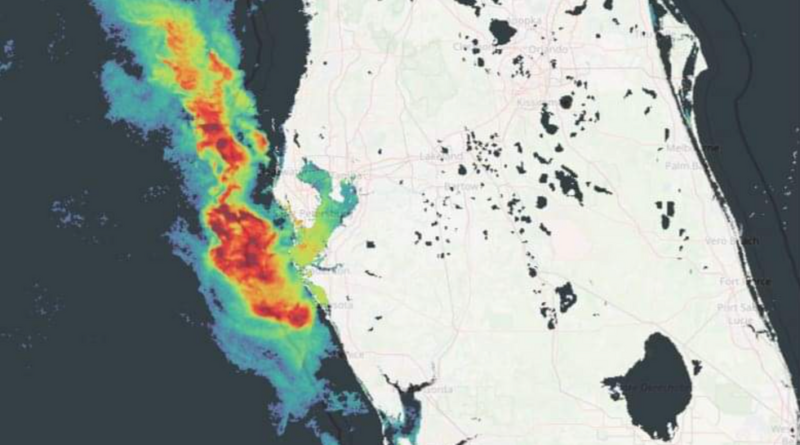‘Do not swim!’ Americans issued major ‘toxic’ algae warning after Hurricane Milton batters Florida
Satellite data has revealed a potential red tide bloom developing along Florida’s Gulf Coast in the wake of recent hurricanes.
Increased chlorophyll levels have been detected along the western coastline near Tampa, indicating possible algae growth.
Experts caution that Hurricanes Helene and Milton have delayed regular sampling to confirm these findings.
Scientists said that while hurricanes do not cause red tide, they can exacerbate existing blooms.
Richard Stumpf, an oceanographer with the National Oceanic and Atmospheric Administration, told ABC News: “Hurricanes do bring up deeper water in the Gulf of Mexico, which has more nutrients. They also could produce a lot of rain.
“You have runoff from the land, which also adds nutrients. It tends to intensify a bloom that’s already there.”
Karenia brevis, a single-celled organism, is the main culprit behind Florida’s red tide blooms.
This microscopic algae produces potent neurotoxins that can be harmful to both marine life and humans.
Beth Stauffer, a professor of biology at the University of Louisiana at Lafayette, said: “It’s so dense that it actually discolours the water, right? Hence the red tide name.”
LATEST DEVELOPMENTS:
Met Office issues rare AMBER weather warning as Storm Ashley looms – ‘Danger to life’US weather: Experts ‘keeping close watch’ as ‘disturbance’ gears up to unleash fresh assaultUS weather: Weak La Nina to allow for Christmas heatwave as temperatures to surge
In a social media post, Bam Weather said: “Toxic algal blooms caused by the upwelling from Hurricane Milton and Hurricane Helene are happening around the Tampa Bay Area.
“This is particularly bad for humans and deadly for sea animals. Do not swim in these waters. Unfortunately, this will likely lead to many fish and other sea animals to wash up on shore.”
The toxins can be suspended in the air near beaches, posing health risks to people who breathe them in.
Symptoms may include coughing, shortness of breath, and dizziness.
Those with respiratory conditions or autoimmune issues are particularly vulnerable.
The American Lung Association warns of several symptoms, including sneezing, a runny nose, and wheezing.
For marine life, the consequences can be dire. Red tide blooms have been linked to a population reduction for fish and other sea creatures.
The Florida Fish and Wildlife Conservation Commission’s red tide monitoring map detected medium to high levels of karenia brevis near Pinellas County between September 26 and October 3.
Chuanmin Hu, a professor at the University of South Florida, told FOX Weather: “We have been keeping a close eye on this red tide that started before the two hurricanes, and we were not surprised to see its quick development after the hurricanes.”
Hu’s team, along with the state’s Fish and Wildlife Research Institute, is collecting water samples to determine the bloom’s extent.

